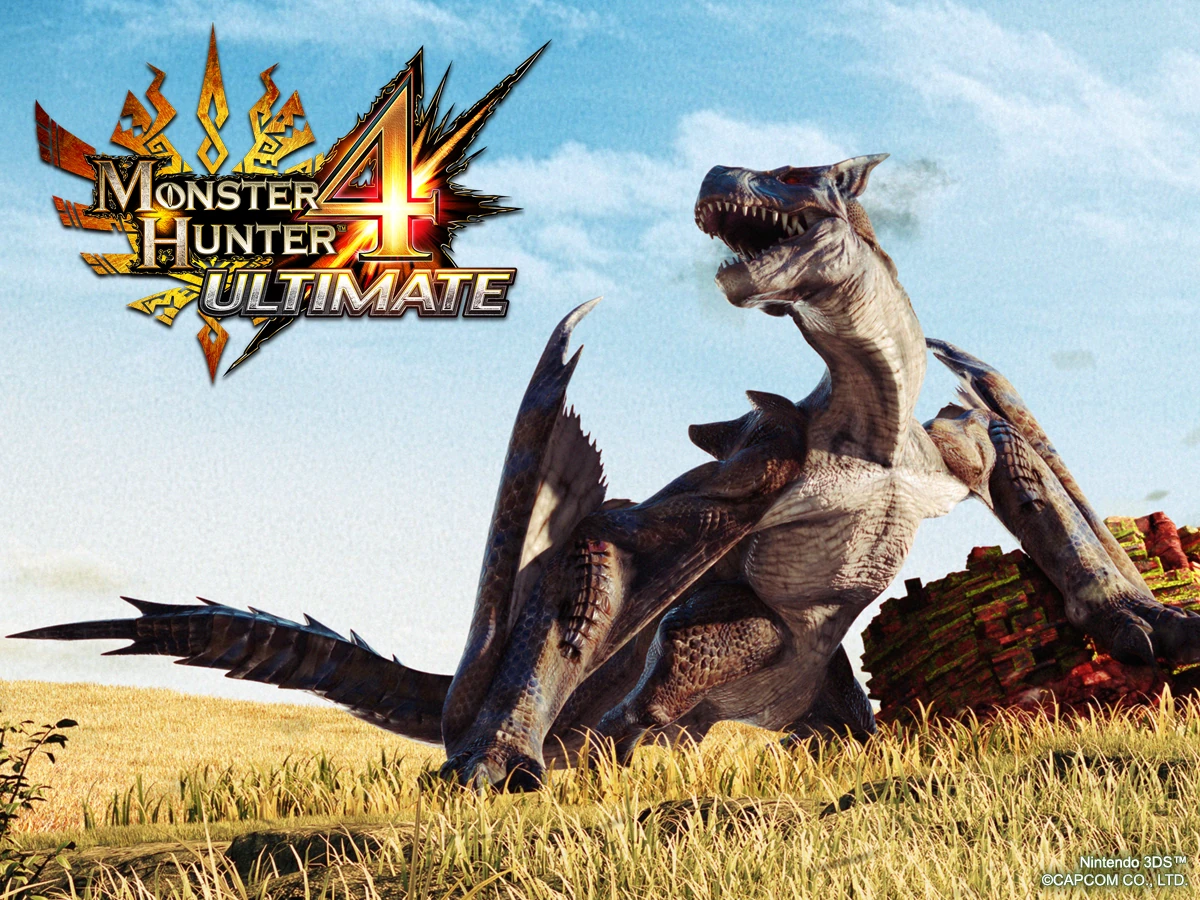
Monster Hunter’s 4th generation was in an odd position. On the one hand, the series had taken off again in the West, bringing in a new stream of revenue, and Tri was exceedingly popular. On the other, the series new updates were more segregated than ever. The next few mainline games would be restricted contractually to Nintendo’s 3DS, while the MMO Monster Hunter Frontier was only officially released in Japan, and kept periodically updating into the 4th generation’s run.
With different gameplay innovations and art styles, these two branches of Monster Hunter diverged quite wildly, but it is for that reason that I wish to cover them together here. As a comparison article, we can see just how these two branches of the series interpreted its cast of monsters in their own ways.
Akura Vashimu
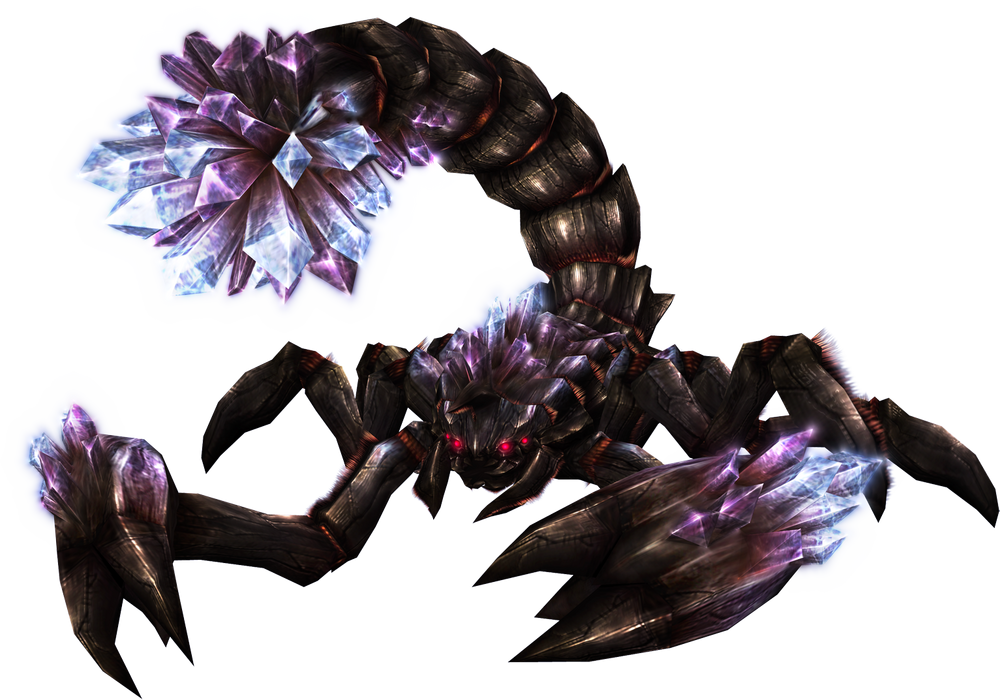
This monster from Frontier shows how its art style diverges from the mainline games. This is a cool geode scorpion, but something about it doesn’t gel with the way monsters are usually designed. It seems like it needs another feature mixed in to be really complete. However, those claws are very cool, totally different than an actual scorpion’s in a neat way.
Taikun Zamuza
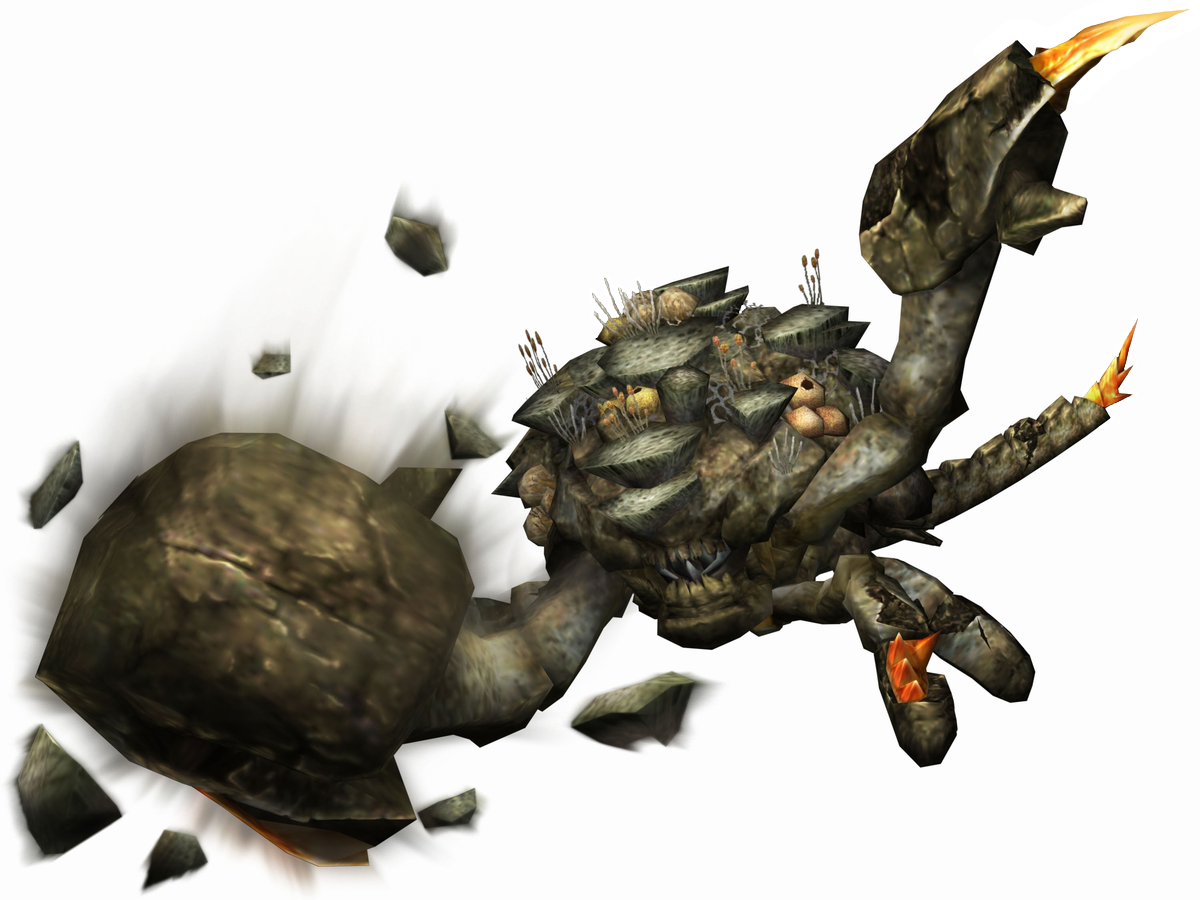
Frontier’s other new arthropod is a lot more consistent with the series’ usual style. It’s more clear that it’s not a rock monster, but rather a creature clad entirely in stone. It has some good tasteful asymmetry with that one oversized hammer hand, and a nicely unnerving humanoid mouth. It also has a tail, which suggests it’s something closer to a horseshoe crab than an actual crab. A good addition to our crustacean lineup!
Konchu
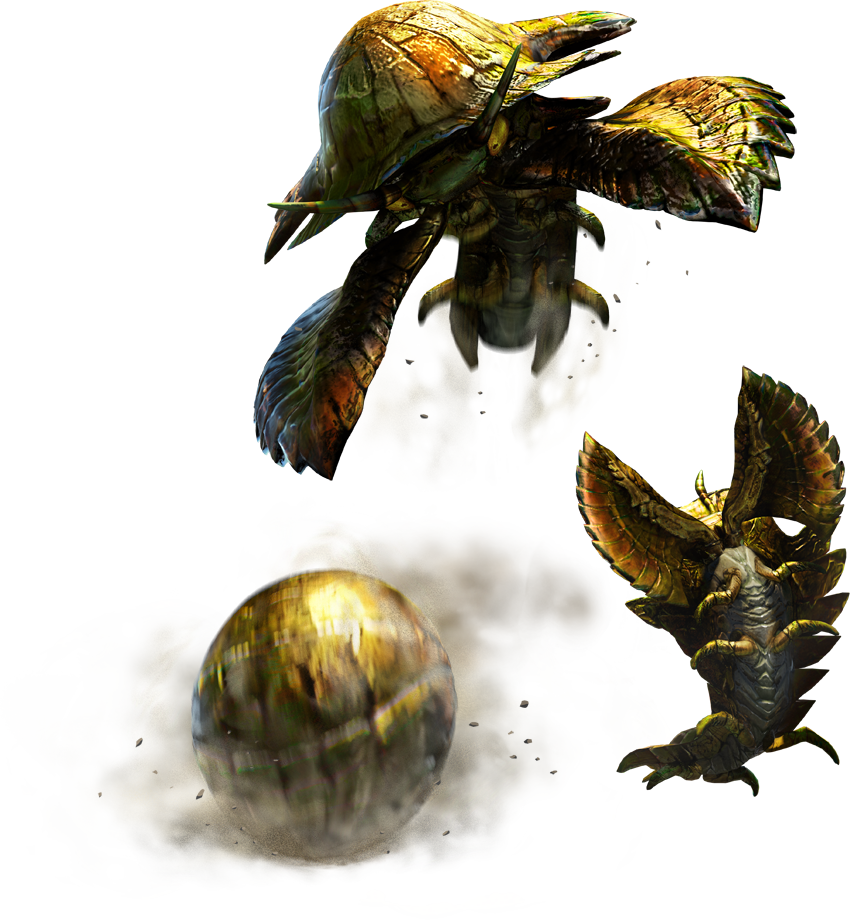
Generation 4 also supplies us with some new arthropods, starting with the adorable konchu. It has a bit of a woodlouse look, but with some extrapolation to create really cool flat blades that it seems to use to dig. Like a pillbug, they can roll into a ball, and like any media animal that does that, they can then roll at you hard enough to knock an adult human over.
Seltas
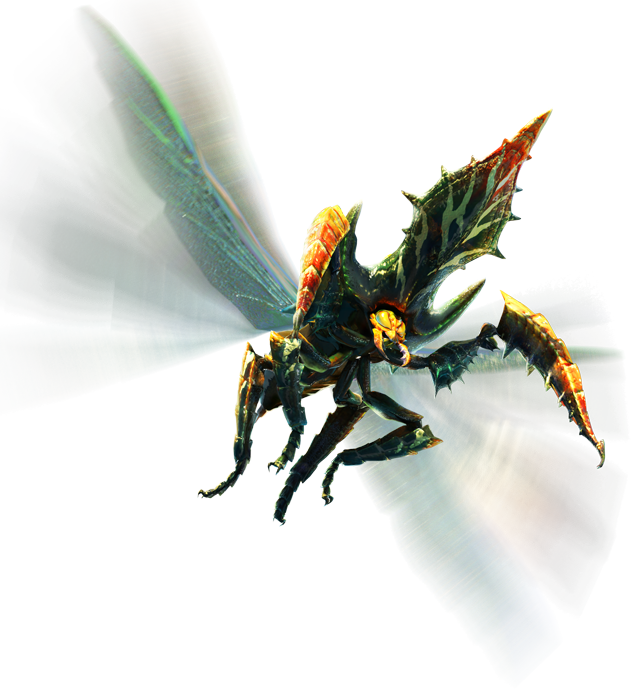
The seltas is highly sexually dimorphic. What we see above is the male, smaller than the female and with wings. His most interesting feature is the massive structure coming off his thorax, dwarfing his actual head. That’s really cool, an exaggeration of the real structures some insects have. Using it as a weapon is even more fun, making it like a weird insect sawfish.
Seltas Queen
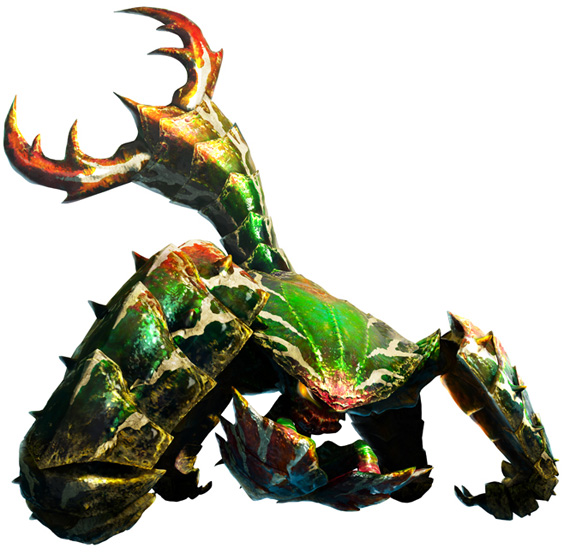
The female Seltas is significantly larger and wingless, not just a cool bit of sexual dimorphism but a realistic one. In several real species of insects, we see this, with mobile males seeking out larger females on the wing. I really love her body shape, almost an insectoid mimicry of a gorilla. Those spiny legs curling under her body is a great look, and I love her huge earwig like claws on her tail. She isn’t shaped like any real insect, and that’s cool! She can function with her mate as one unit like combining mechs, with him riding on her back to fly her around, use his horn when she chages, and provide her with a snack when she runs low on stamina. Now that’s relationship goals. I want piggyback rides from my girl.
Nerscylla
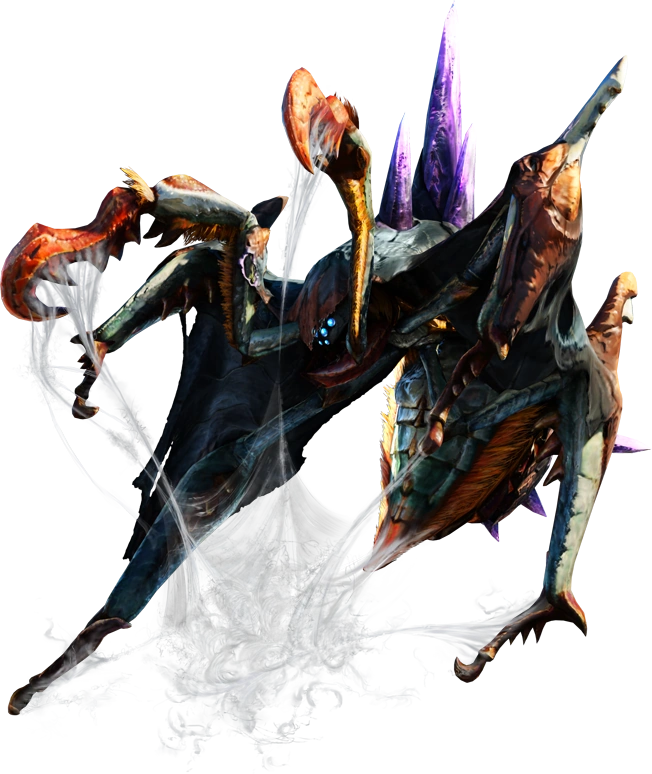
Many giant spiders in games are a little simplistic, little more than just oversized versions of their real world counterparts. Nercylla does not fall into this trap, maintaining Monster Hunter’s neat style. Its distinguishing feature is the skin of a Gypceros that it wears over its body, adding a ton of personality to its design. The image of its many eyes glowing under that natural hood of skin is both adorable and awesome.
Uruki
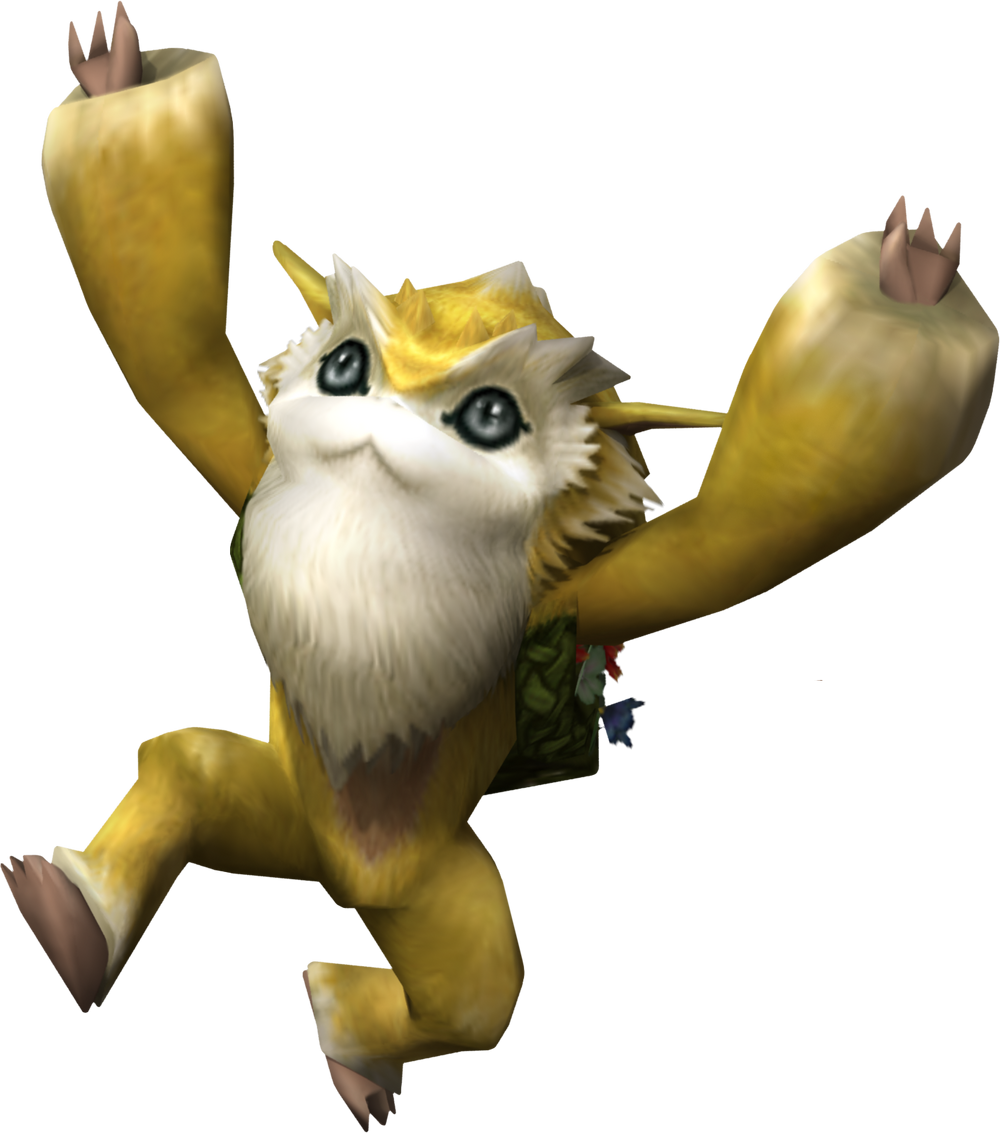
Completely unique to Frontier, the Uruki are a species of “Lynian” a general term for sapient mammalians besides humans. The first introduced were the feline Felynes and Melinxes, but Uruki appear to be more simian, or perhaps like a lemur. It’s really cute, and not in the simplistic way of the Felynes, with a more unique face. They plant dangerous flowers that can attack hunters and monsters alike, but also draw another species of monster that feeds upon them, leading to an interesting dynamic.
Forokururu
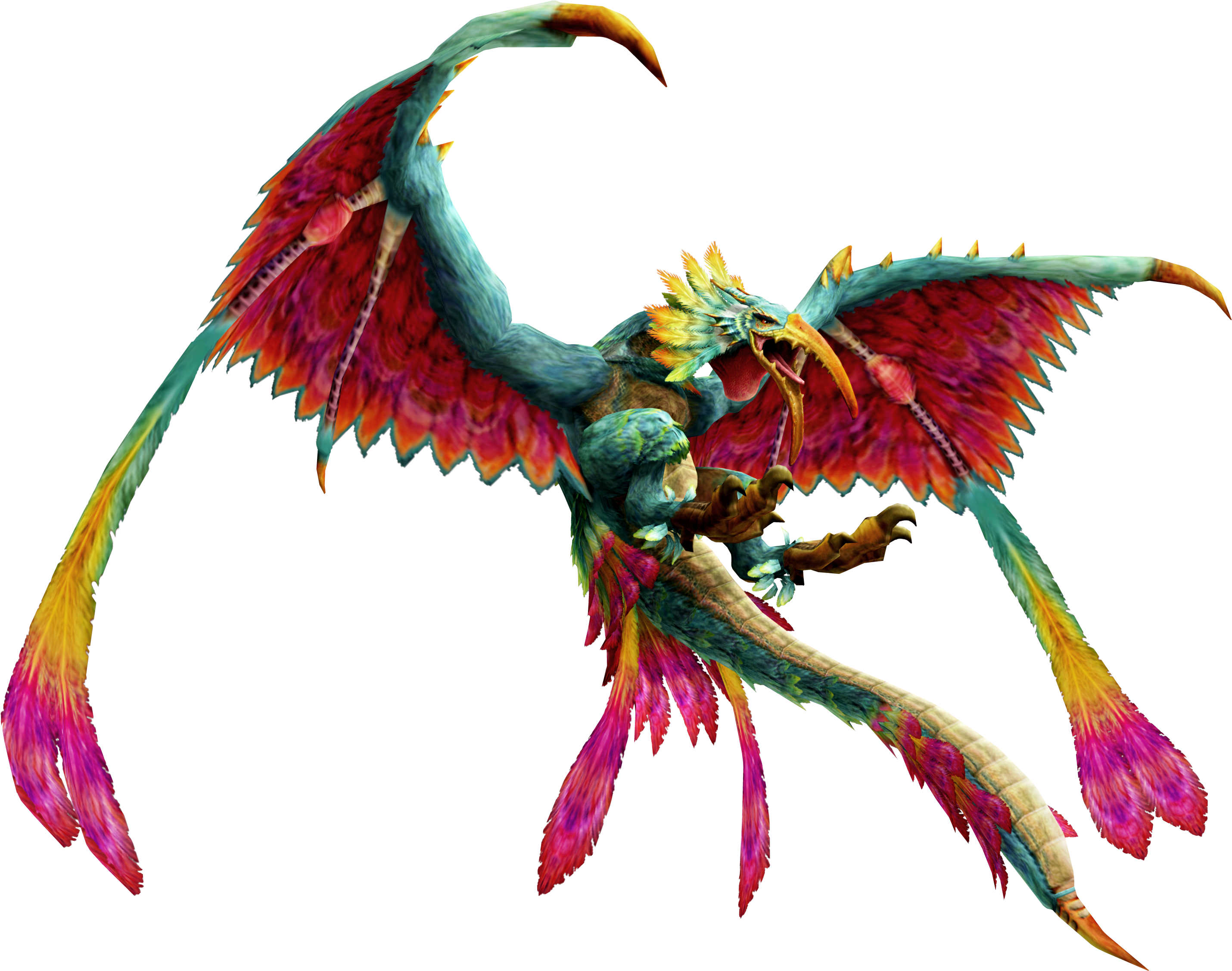
Forukururu fills one of my favorite monster archetypes, the feathered dinosaur (being a real thing that actually exists does not prevent it from being a monster archetype as well). It is, effectively, a gigantic hummingbird, feeding on different flowers in its environment to gain different powers in battle. I love the contrast in its colors, a good balance of a cool base with extremely vibrant warm highlights. Its face is also pretty great, a nice curve for sipping from flowers. I like the odd detail of those strange wings, with the strange oblong organs on its fingers and long feathers branching from the ends.
Kamu Orugaron
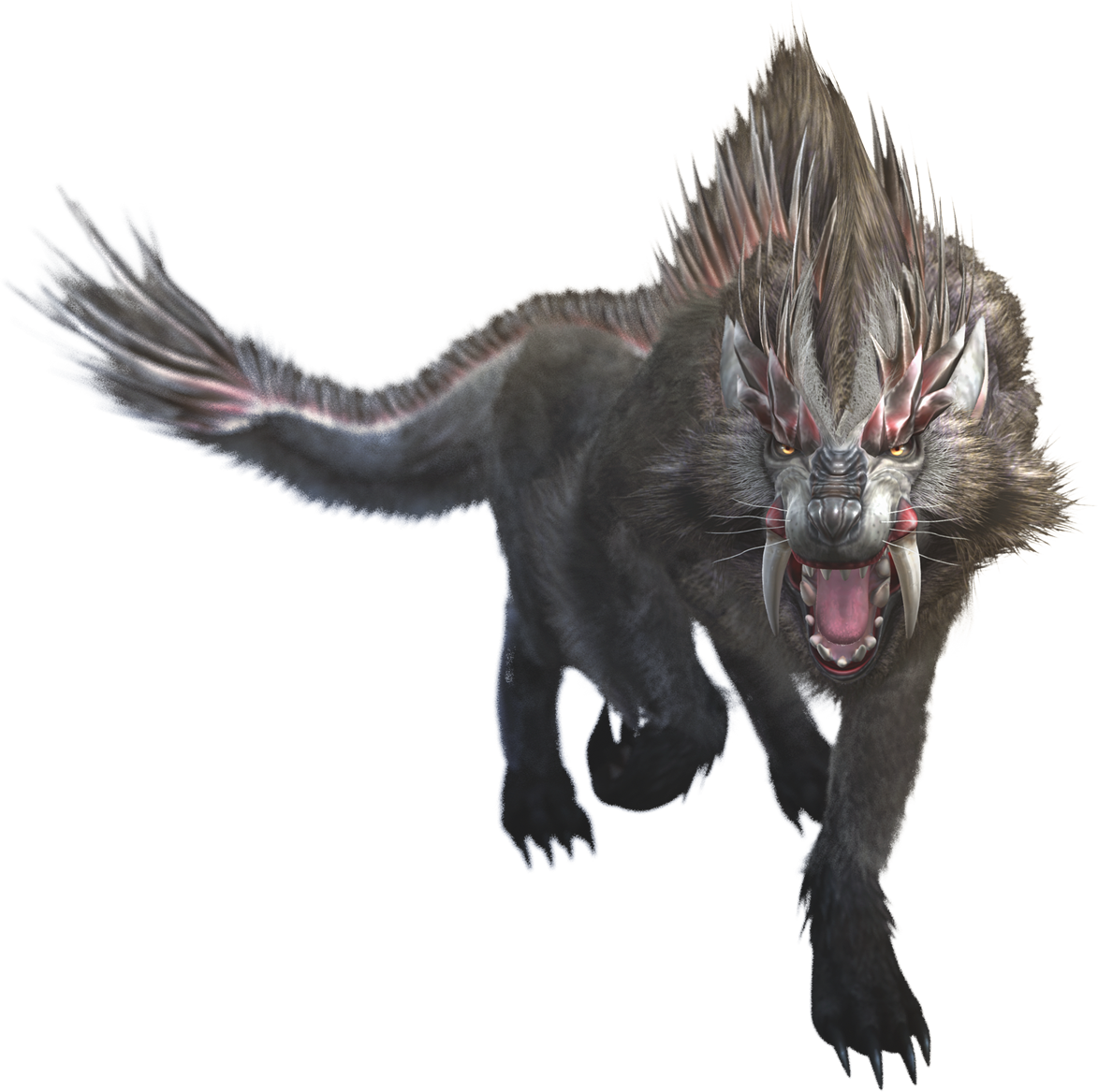
Another Frontier monster, Kamu Orugaron is, yes, just kinda a wolf, but I like its weirdly reptilian tail and saber teeth, which are actually unknown in canines. It’s just neat is all. Makes it look like a gorgonopsid.
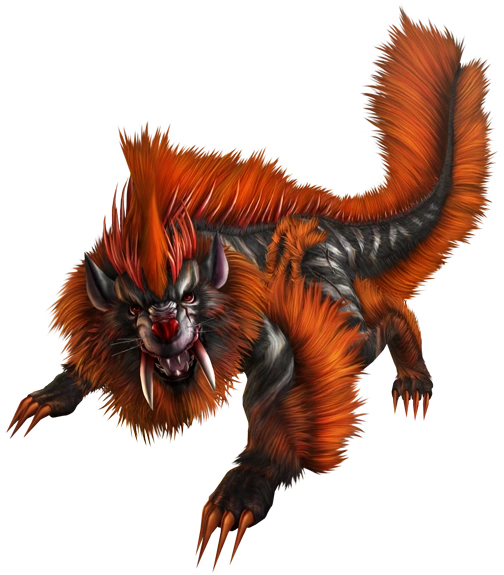
Midogaron is a variation that adds a snazier color pallet with some stripes. Nice!
Kecha Wacha
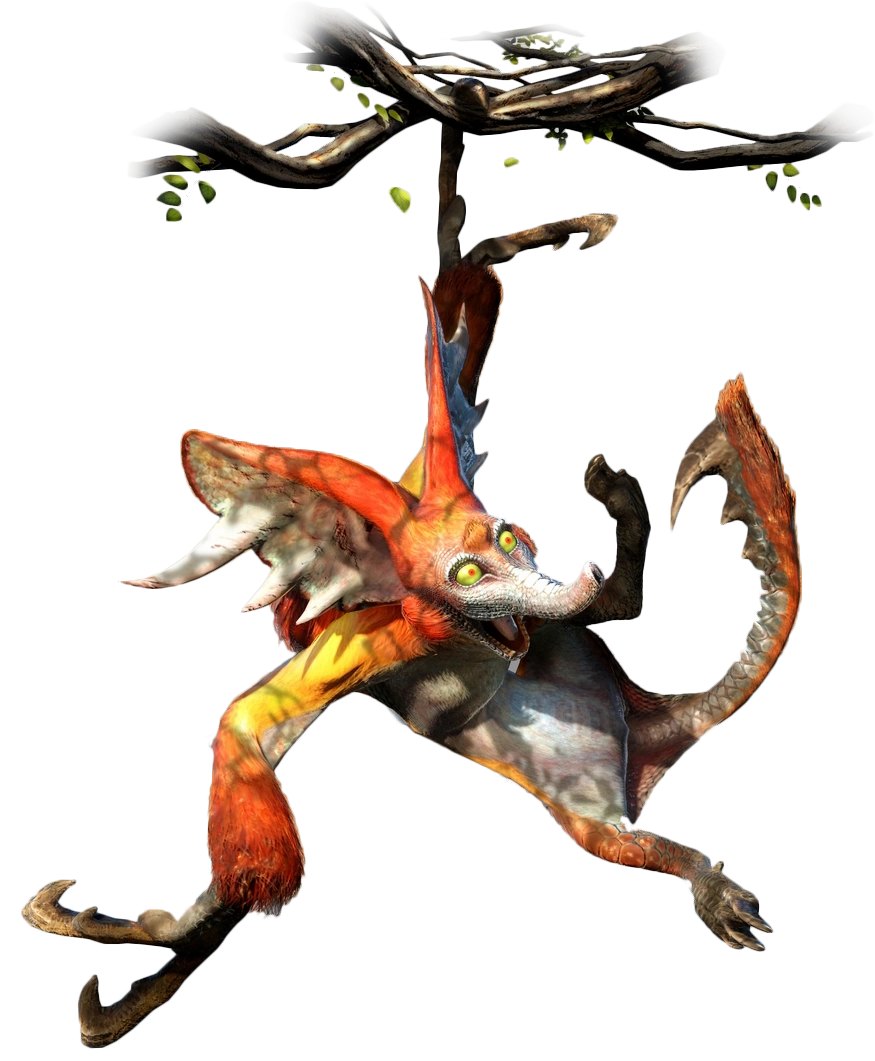
Monster Hunter 4’s only new fanged beast, the Kecha Wacha luckily adds to my favorite group of fanged beasts; primates! At least, I think Kecha Wacha is a primate. It’s a fantastical chimera, with climbing claws like a sloth’s, a little trunk like a tapir, and an almost beak-like mouth. This thing’s a dangerous muppet. It can also glide like a flying squirrel, and its ears have false eyes on them, letting it make a “mask” when enraged!
Lolo Gougarf
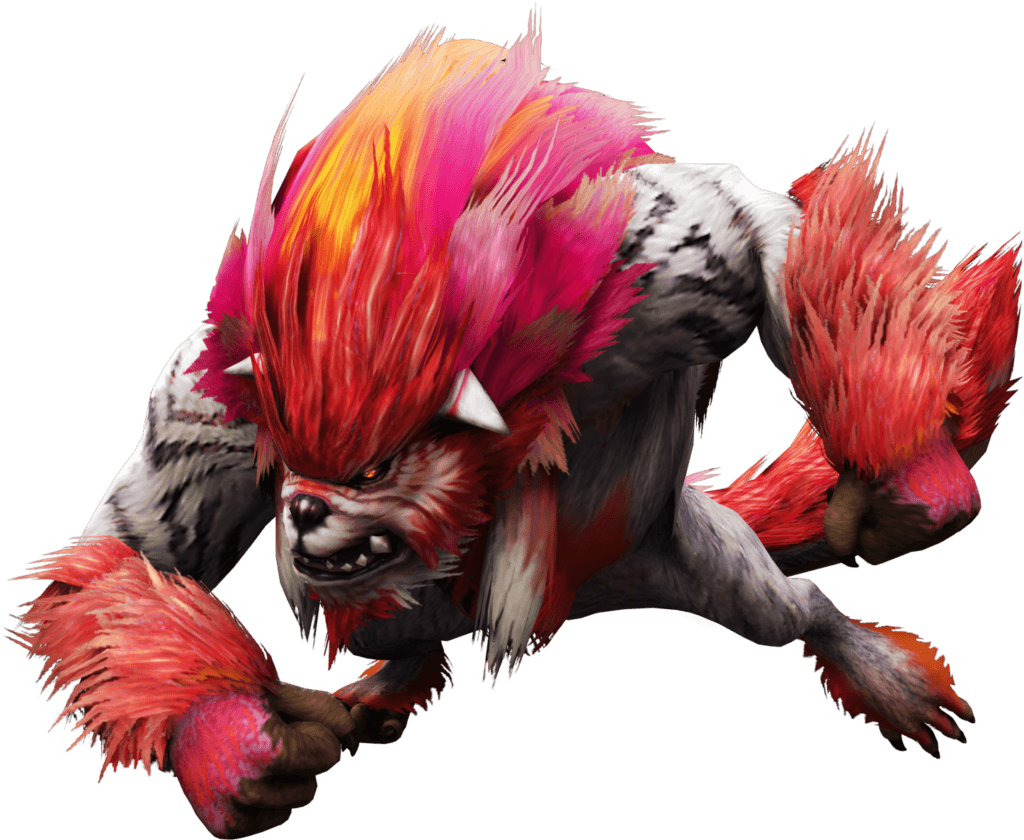
Another potential primate, although this one must be a lemur. It’s wildly different from anything else in the series, with those vibrant colors, a canine skull, and an apelike body. This is actually one of my favorites. It’s so unexpected from anything, especially this series. Looks like it could be in Labyrinth. An abundance of personality and good vibes for such a grouchy dog!
Najarala
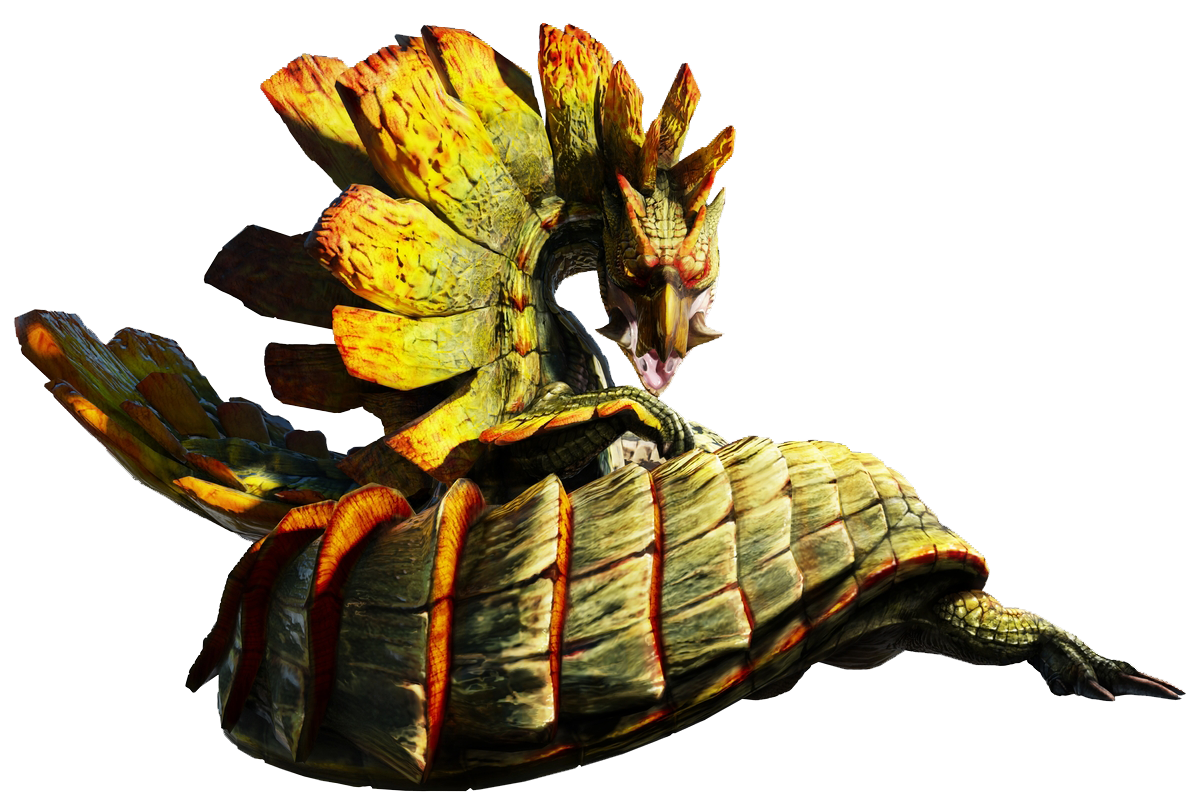
Monster Hunter Four also introduced snake wyverns as a category. They never really took off, but Najarala is a great introduction. It has a striking sillhouette, with an elongated body broken up by those huge back plates. The small details are also really nice, such as the tusked beak, much like a dicynodont (a successful group of synapsids that dominated the planet in the early Triassic) and the tiny legs. Snake-like, but not at all a snake, one of my favorite design processes!
Tetsucabra

4 also introduced amphibians, another group of monsters that never came back but had an incredible example in the game. Tetsucabra is just great, a big horrible hippo frog. I love this thing’s head. Those tusks are awesome, just massive rocky outcroppings of jaw, and the detailed dentition is also cool. While it’s claimed in their description that they look through rocks for prey, those are clearly herbivore teeth. It really is a hippo! It won’t eat you, it’ll just smash you up out of pure spite!
Odibatorasu
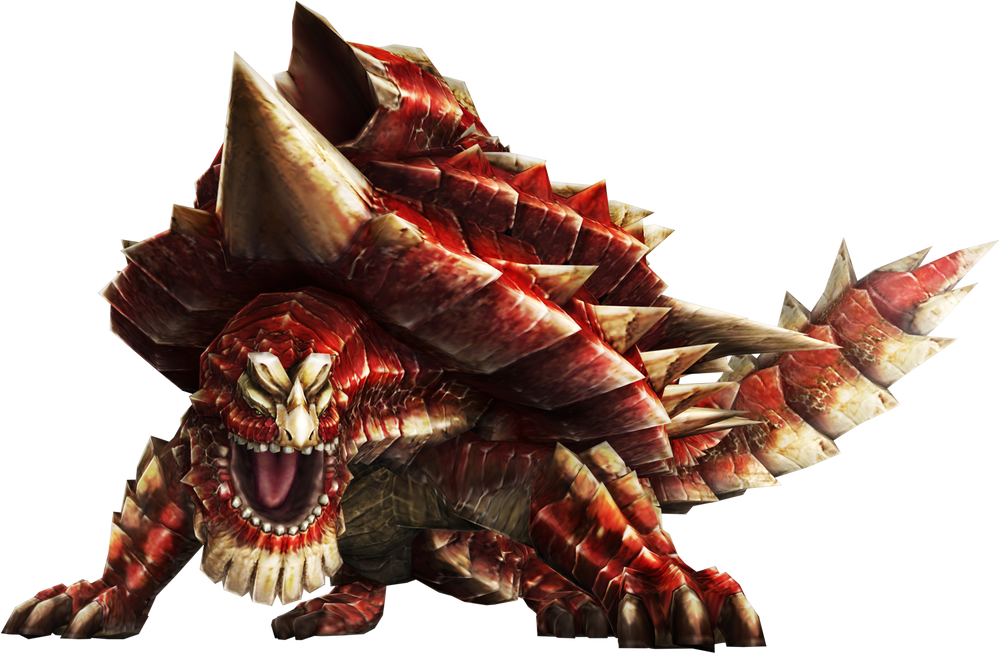
Frontier added a lot of flying wyverns, but most of them were effectively just variations on the classic Rathalos mold or Tigrex reskins. This one is different! You may notice that it doesn’t even have wings, making me wonder why it’s a flying wyvern. But what matters is that it’s cool! It’s a living tank, capable of shooting sand blasts from the hole in its shell. Cool! It has a really nice glossy red and I like that it’s got a Rathalos-style beak nose going on.
Baruragaru
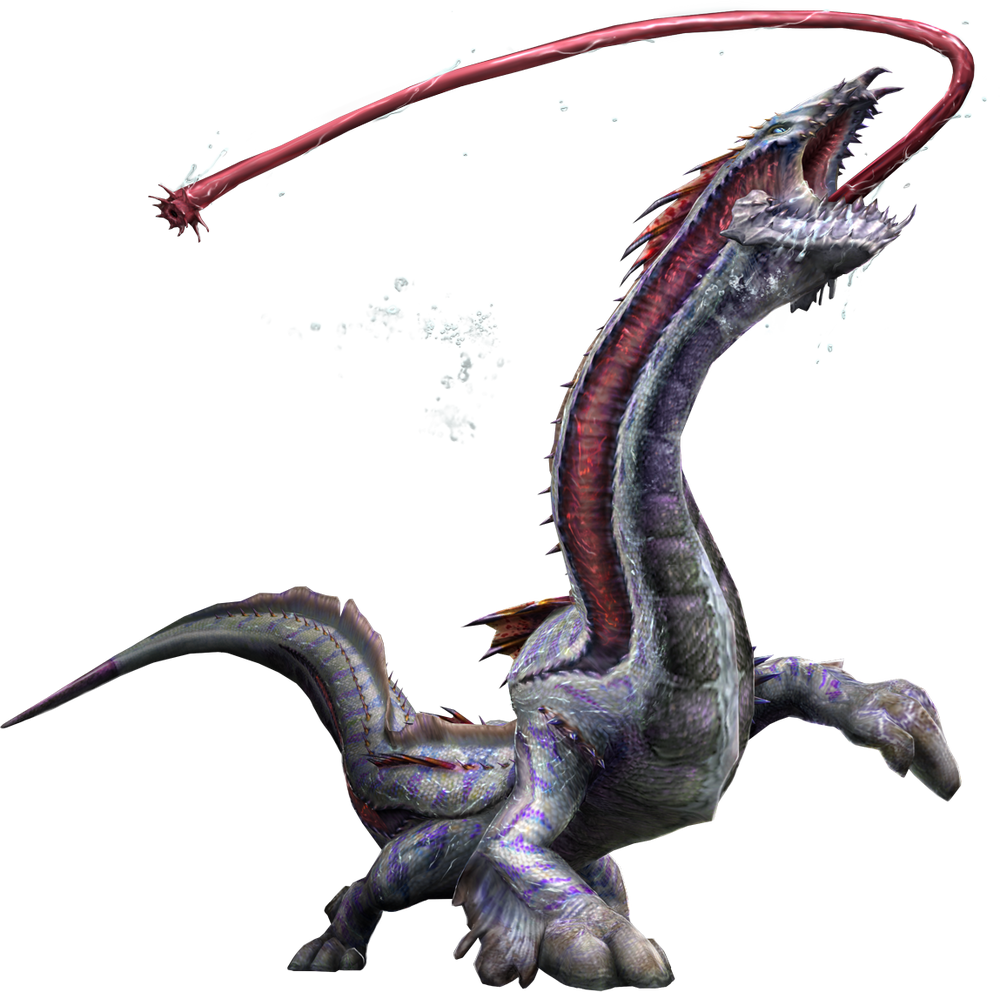
Frontier also added several leviathans, but I again only care enough about one to mention it. It’s not the most interesting one visually, although I do like that tendriled tongue it’s got. What made it stand out is that it’s a vampire! It drains blood through that tongue, and gains different powers depending on what it fed upon. I love seeing how their designs interact with their in-game mechanics!
Gore Magala
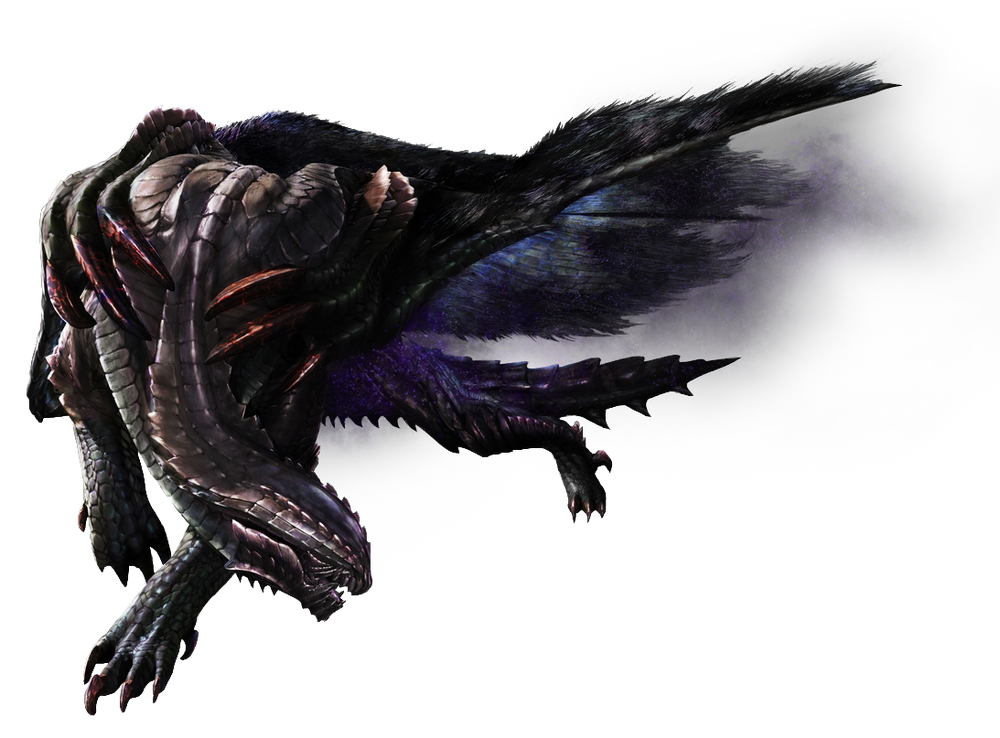
We aren’t finishing this with my favorite design, but merely a concept I find particularly interesting. Gore Magala does have a nicely alien head, with no sign of eyes and a strange rough mouth to compensate the smoothness of the neck and head. It also holds its wings in a really cool fashion, its massive claws clinging to its shoulders so that the wing membranes form a cape! The fur on them is a really great detail too.
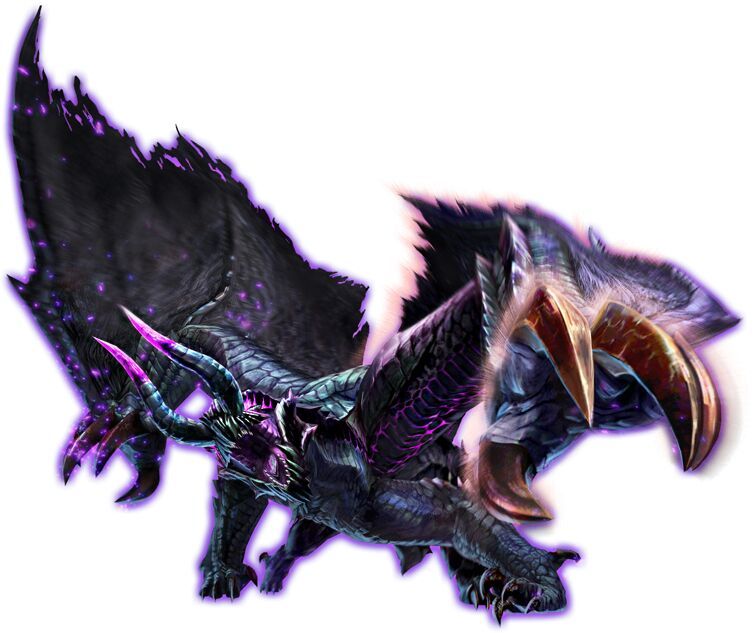
When enraged, Gore Magala also gains glowing horns and opens its wings to create a dark miasma. It’s honestly a little less unique to me, but it’s cool. Its miasma also spreads “frenzy”, a virus the dragon carries to other monsters, causing them to be more aggressive and powerful, but also less resistant to harm. This disease can even infect the player character, granting the same buffs and debuffs!
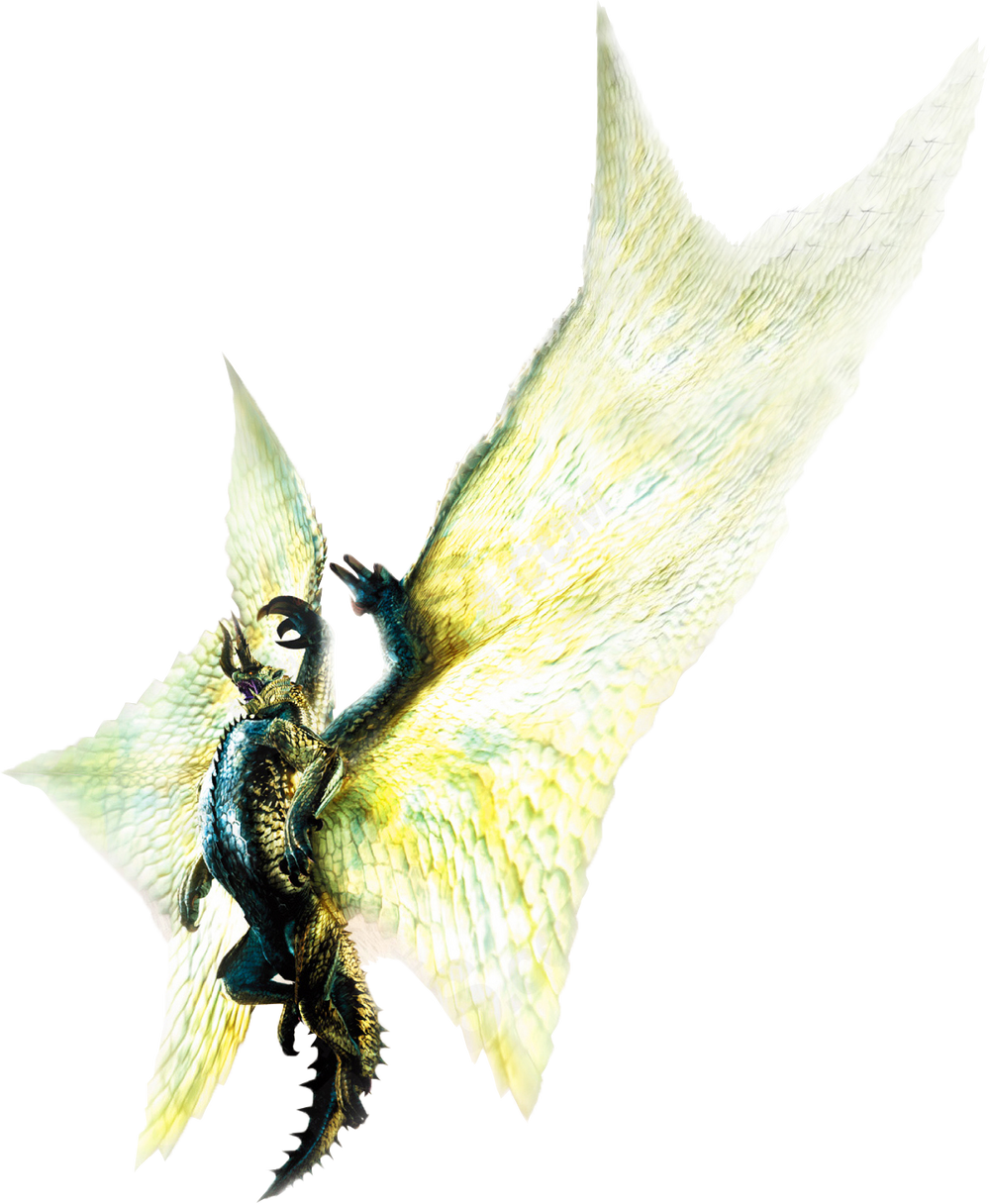
Unfortunately, Shagaru Magala, the adult form of the creature, isn’t so unique, but it does gain some cool features. In particular, the shape of those wings is super neat! Unfortunately, they gave it eyes as an adult. Lame! If something lacks a facial feature, that’s an important design detail!
Miss the other Monster Hunter articles? Check them out below!
